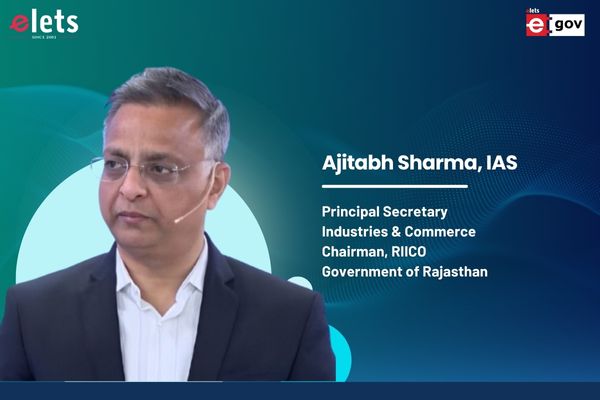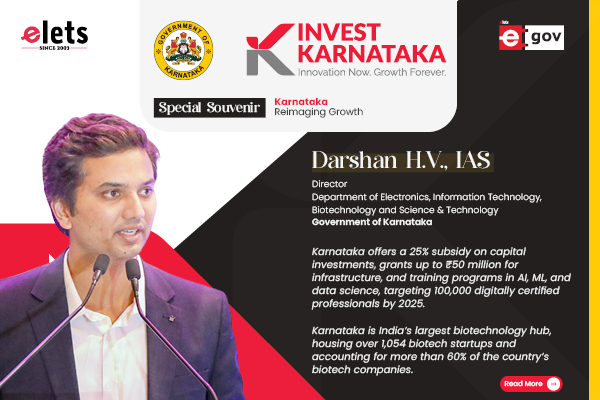 “Open standards are key to government ICT programmes because they provide insurance that the systems they have today will be able to talk to the systems they put in tomorrow, and next year, and in the decades to follow. This is especially true for documents, because what is expressed in the documents created by governments and citizens now will become the history of the future”, says Robert S Sutor, (sutor@us.ibm.com) Vice President, Open Source and Standards , IBM, in coversation with egov magazine.
“Open standards are key to government ICT programmes because they provide insurance that the systems they have today will be able to talk to the systems they put in tomorrow, and next year, and in the decades to follow. This is especially true for documents, because what is expressed in the documents created by governments and citizens now will become the history of the future”, says Robert S Sutor, (sutor@us.ibm.com) Vice President, Open Source and Standards , IBM, in coversation with egov magazine.
What is the vision and objectives of the corporate open source and standards group of IBM?

We operate as part of IBM’s full open source and standards effort, focusing on issues such as cross-unit business strategy, community membership, and intellectual property. Our goal is to help the company optimise both short and long term growth and revenue, while simultaneously working with the industry to accelerate innovation around interoperability and new technology.

What is your role as Vice President, Standards? What are the initiatives taken by your division towards the open standards?

I work with colleagues in the hardware, software, legal, services, and industry areas to help develop and execute a coherent cross-IBM strategy around open technologies. In plainer language, this means that my team and I work with the various parts of our business that work with open source and standards. Some business units with IBM have been using open source, for example, for many years and have very mature business models. Other units are exploring new activities around open source and standards and we engage with them to optimise the expected results across all of IBM. We are involved with many of IBM’s initiatives around open standards such as promoting industry-specifi c and crossindustry standards (such as OAGIS), and helping people understand the need for true, non-vendor dictated open document standards like the OpenDocument Format.

IBM is the world leader in patents and also a leader in open standards and open source. How does your company fi nd a balance between the two?
We very much believe that patents must represent true technical innovation and that improved patent quality is an increasingly important goal around the world. Ownership of patents grants great power but also great responsibility. We seek to allow IBM to grow through our very large R&D investments but also recognise that signifi cant innovation will come about when we collaborate openly with other technologists around the world. Moreover, we believe that software interoperability is best driven by truly open standards that level the playing fi eld and produce a strong foundation on which many people can innovate. The days of interoperability meaning “buy all your software from one vendor” are over, though that message is still being perpetuated. In the end, with IBM it is a balance of how much we do ourselves and how much we work with the community to accelerate the creation of new technologies to improve our customer’s business.
What are the core strengths of open standards? Could you give a quick comparison on: Open Standards vs. Proprietary specifi cations?
Open standards are developed by a community of independent people to create the rules, or blueprints, by which data is represented and transferred. No one party has any more advantage over another when it comes to implementing open standards. Since there is common agreement on the standards, work then proceeds to advance with regard to what one can do with the new abilities to share information in a form that everyone can use. Think of it this way, do you want vendors producing multiple “standards” for the electrical wires and outlets in your house or apartment, or would you rather they reached some agreement on the basic infrastructure and then competed to bring you better electrical and electronic appliances at a lower cost. It is the same with software standards.
Proprietary specifi cations are often called de facto standards because they come about because of wide adoption of particular products, for whatever reason. The control of a de facto standard often lies with a single vendor, who can change it at will and force customers to use it because of the dominant market share. This disadvantages competitors and keeps customers locked in to the controlling vendor’s products, which is exactly what that vendor wants. Lately we’ve seen a variation on this where an “open standard” is created by a vendor in a friendly trade organisation under the condition that the result must be compatible with the vendor’s already-implemented product. This is simply the old vendor lock-in game in a new disguise.
What are the benefi ts of interoperability in the e- Governance initiatives? How important is the open-source software for developing countries, requiring cost-effective solutions to reach its citizens in a big way?
We should separate the ideas of open standards and open source. Open standards are the blueprints that tell you how to create software from multiple providers that can fully and faithfully exchange information. Open source is actual software, created by a community and licensed in a way so that it can be used and further developed by others. So the ideas are separate, though a particular piece of open source software might implement one or more open standards. Open standards are key to government ICT programmes because they provide insurance that the systems they have today will be able to talk to the systems they put in tomorrow, and next year, and in the decades to follow. This is especially true for documents, because what is expressed in the documents created by governments and citizens now will become the history of the future. So governments should specifi c true, non-vendor dictated open standards to allow their systems to interoperate.
Open source might be part of the mix in the actual ICT environment that gets installed. The price and the features might match with the requirements of the programmes that the government is trying to execute, such as in education, but also in the backend enterprise infrastructure. It’s likely that governments will install a hybrid of open source and proprietary software. In this case, open standards can help ensure that they can talk to each other.
What are some of the barriers to open source adoption?
The fi rst barrier I believe is education: what is open source, how is it created and maintained, and how does it fi t in with the traditional, proprietary software already installed. The second is getting past the FUD (fear, uncertainty, and doubt) that has been deliberately spread by opponents of open source whose traditional business models are threatened. Finally, the more experience people get with open source, the more fi rsthand knowledge they will get, and the better they will understand if it makes sense to expand its use.
Please tell us about the different open source options, especially the open document format?
The Open Document Format, or ODF, is an open standard. It can be implemented by open source or traditional proprietary software (that’s one of the wonderful things about open standards). ODF is implemented in open source projects such as OpenOffi ce.org and KOffi ce, but also in proprietary products such as the forthcoming Lotus Notes “Hannover” release. If we look at software in general, there are thousands of open source projects from operating systems, to mobile phone software, to software development tools, to applications, to blogging software, to databases, and to everything else in between.
How do you see the future of open standards?
I think proprietary standards are dying. I believe that the example of the world wide web (www) and the open standards that underlie it proves that real operability that is not controlled by a single vendor is possible and preferable. The www lead to global business growth, extraordinary innovation, new markets & hundreds of new consumer “products.” Let’s repeat this success, create and use more open standards.
Be a part of Elets Collaborative Initiatives. Join Us for Upcoming Events and explore business opportunities. Like us on Facebook , connect with us on LinkedIn and follow us on Twitter, Instagram.
"Exciting news! Elets technomedia is now on WhatsApp Channels Subscribe today by clicking the link and stay updated with the latest insights!" Click here!













